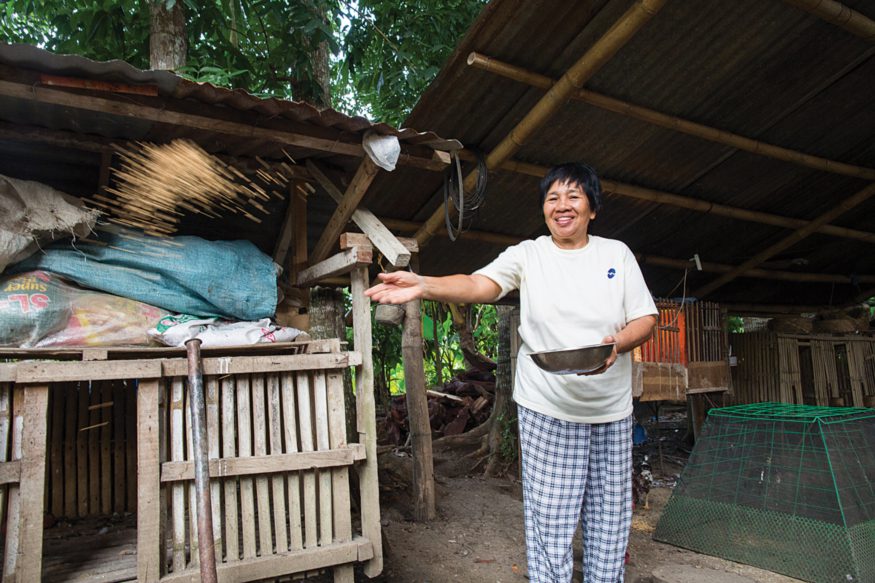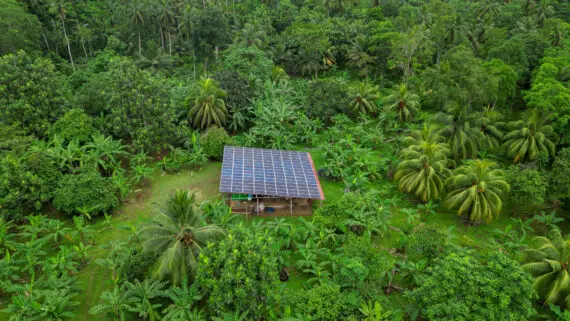Once poor and a domestic worker outside her country, Mercedita Cubar today is the president of the Farmer’s Federation of Pototan, a town considered the rice granary of the central Philippines. Despite being the eighth largest rice producer in the world, the Philippines is one of the largest rice importers. Simply put, the Philippines consumes more rice than it produces.
It is not unusual for a woman farmer like Cubar to lead such a group in the Philippines. Eight out of every 10 smallholder farmers worldwide are women, and the Philippines is no exception. However, limited fertile land, irrigation, and now climate change have conspired against farmers working to provide rice to the country’s 97 million people.
Climate change is the issue that most worries Cubar and other smallholder farmers. The resulting unpredictability of weather patterns has wreaked havoc on the ability of smallholder farmers to reliably feed people. They are unsure about what kind of rice to plant and when to do so. But now, through the federation, Cubar is teaching fellow smallholder farmers to adapt to climate change.
The Philippines, an archipelago of 7,100 islands strung along the Pacific Ring of Fire, is ranked among the top 10 countries worldwide at risk from climate change and natural disasters. This island chain has one of the highest exposures to climate change risks like typhoons, floods, landslides, and droughts.
Typhoons cost the Philippines as much as $1.6 billion annually. Among the most impacted are smallholder farmers, predominantly women, who grow most of the rice that feeds Filipinos. Fortunately, many Asian countries like the Philippines have launched programs to help smallholder farmers adapt to rapidly changing weather patterns.
One of those programs is the Philippines Climate Change Adaptation Project (PhilCCAP), made possible through an agreement between the Philippine government and the World Bank. The United States is the World Bank’s largest shareholder, which means the U.S. gives a substantial amount of money to the World Bank for development projects that help many people, especially those struggling with hunger and poverty.
How much money the federal government invests in the World Bank impacts the success of its projects and also how many people living with hunger and poverty can benefit.
One of the hallmarks of the PhilCCAP program is that it teaches weather forecasting to smallholder farmers. This is vital, given the volatility of climate change.
Rapidly changing weather patterns have reduced farm yields in the Philippines. In the past decade, strong typhoons have wiped out entire rice harvests, and extended droughts have withered them. Harvest losses mire smallholder farmers in debt since many small farmers borrow money to buy seeds and fertilizer.
“When you owe a financier, they take what they want from the farm,” Cubar says. “It’s quite disgusting — working, working, and working for nothing. We saw that if we embrace the project, we will never lose.”
Diversification of products and integrated farming is key to a smallholder farmer’s survival. As an early adopter of the practice, Cubar now helps other farmers to do the same. She encourages them to branch out beyond rice. She says she knows that hard times may be ahead.
“So I tell them to integrate,” she says. “If you don’t have money, you sell your chickens. You still need more money? You can sell your pigs. We are trying to change our farming system, not to stick to rice alone.”



